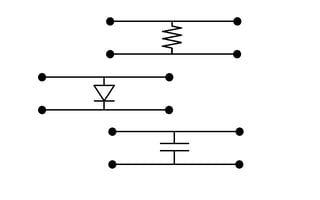People who design, build, and test cables and harnesses know they are far more complicated than people might think. (Particularly screenwriters who have characters build entire spaceships or robots without a single failure.) Cables and harnesses are full of parts to control voltage, current, and more. It takes a lot of parts to make a cable work properly.
If someone asked you what all those different components were for, could you answer them? What does a capacitor do? What is a diode? (If you already know all this, send this article to your screenwriter friend. Maybe they can get it right in their next movie.)
Resistors: This component controls the flow of the electrical current. Every wire has some amount of resistance limiting the current. Adding your own resistor to a cable lets you decide how much you want to restrict the current.
Diodes: This component ensures the current flows in only one direction. This not only keeps current moving the right way, but protects circuits that could be damaged if a charge got through to the other side.
Capacitors: This component acts similar to a battery. It holds a charge (like a battery) but can release the charge all at once (unlike a battery). Capacitors are used in devices like cameras that have a flash.
By this point wire processing should either sound complicated, or start to make sense. Either way, hopefully you’ve gained a new appreciation for the complexity of cables and harnesses. Next time you see an engineer flawlessly build a submarine or a laser in your favorite movie, you can laugh a little harder.
Click the link for information on testing components.

Further Reading:
Resistance Is NOT Futile
3 Ways to Set Yourself Up for Wiring Errors